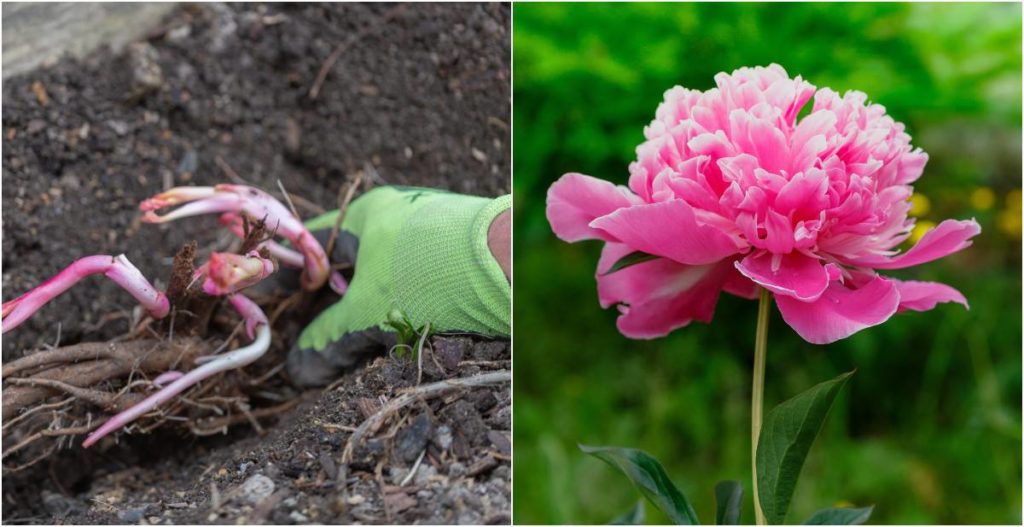
Cottage gardens are all the rage right now. As part of this trend, you may have seen peonies popping up on your social media feeds.
While the popularity of these plants is certainly not new – peonies have been garden staples for decades – there are a new group of gardeners taking an interest in their stunning blooms, whether that be for the value they add to the garden or to the aesthetic of their timelines.
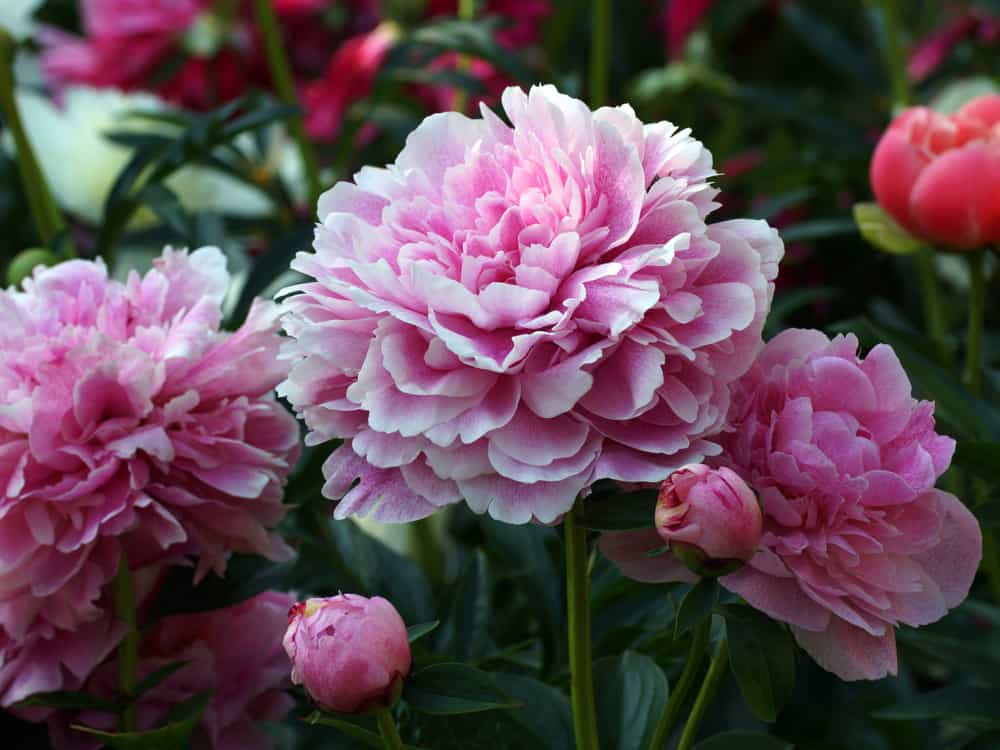
If you’re wanting to spice up your cottage garden or join in on the flower-growing trend, peonies can save the day. You don’t need an expansive backyard to get going too, as peonies grow wonderfully in containers.
They may need some more TLC than your other container plants, but the showy flowers of this plant are certainly worth the extra effort.
Before You Plant Your Peonies
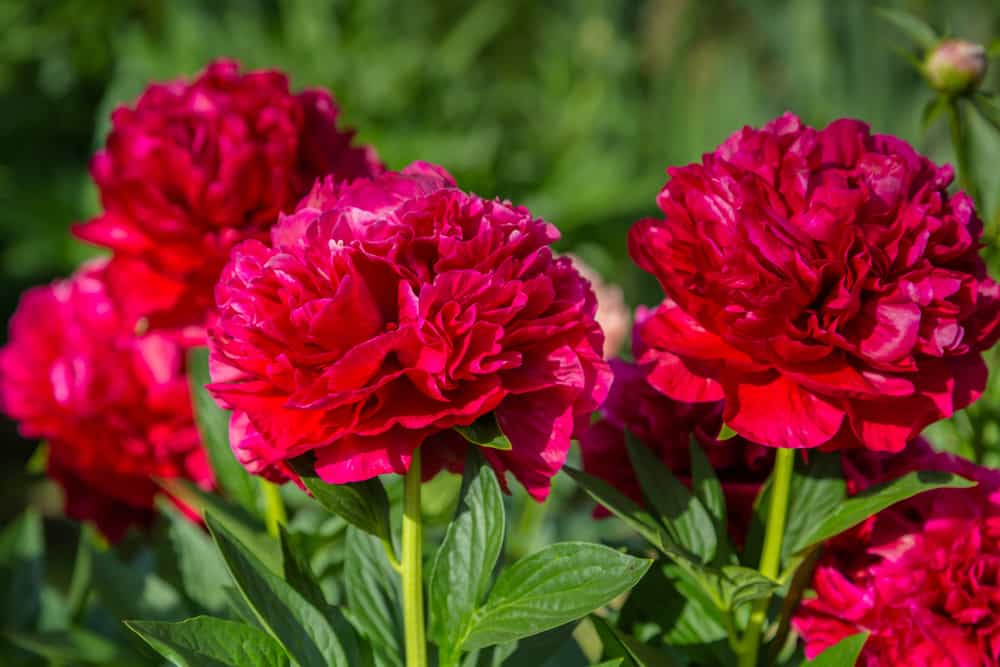
Before you plant your peonies, you need to the right container.
Peonies are large bush plants, needing tonnes of space to thrive. Luckily, with limited space, there are a few smaller varieties of peonies to choose from.
Cinnabar Red is a popular option, growing to just two feet tall.
Regardless of the variety, you should choose large pots with good drainage for your peonies.
Drainage is as important as size when it comes to picking your container. Peonies don’t like wet feet and too much water could lead to rot.
Your containers or pots should ideally be wood, clay, or plastic and about 20 gallons. Whisky barrels make great alternative pots for many plants.
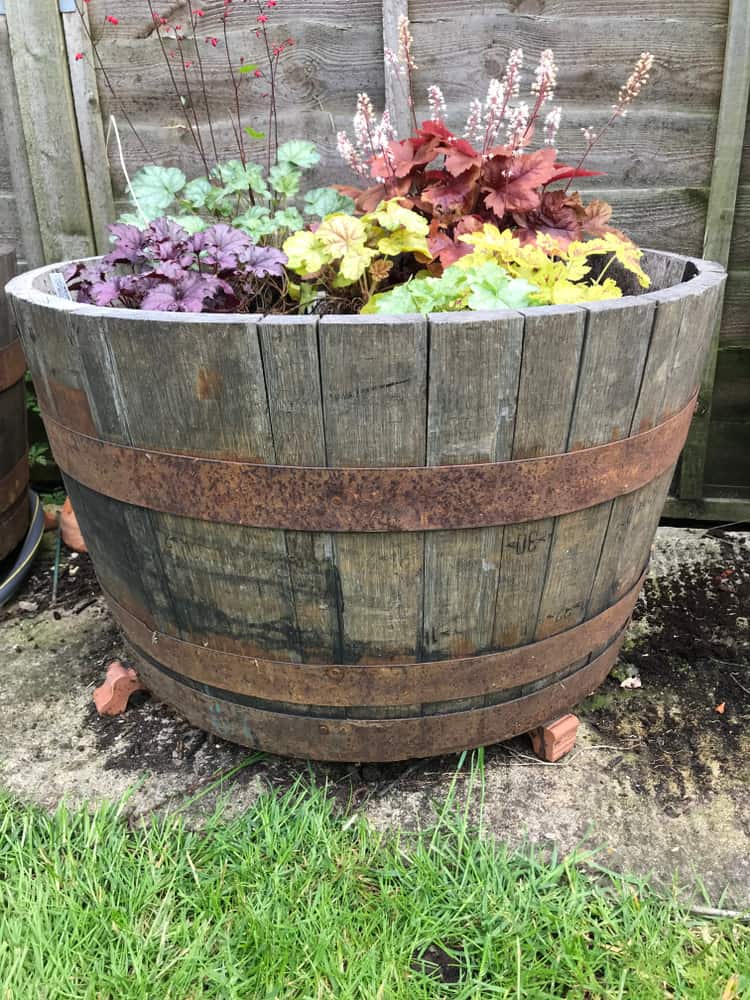
Picking the right peonies is also very important. Avoid specimens with any leaf spots or unhealthy-looking stems when purchasing from your local garden center.
Peonies love light, needing at least six hours of sunlight daily. Place your container in a spot that gets as much sun as possible.
Next, you’ll want to make sure you’ve got the right soil. Peonies need loamy, well-draining soil that’s slightly acidic. For extra drainage, throw in some coconut peat or other peat alternatives to lighten the soil mixture.
Planting Your Peonies
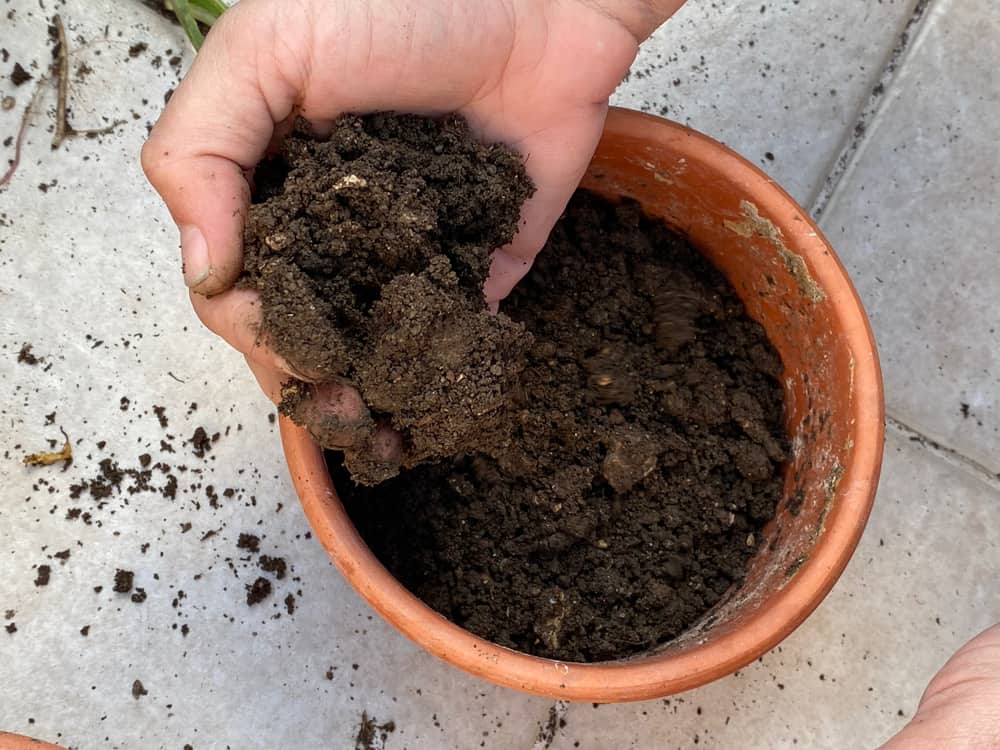
When you’ve got the right container and the best soil for your peonies, you’re ready to start planting. The best time to plant is during fall, several weeks before the first frost date.
Start by filling your container with soil, leaving some space to add additional soil over the planted peony tubers. Next, place these tubers in a shallow hole in the soil, about two inches deep, and cover. Ensure their buds or ‘eyes’ face up when you do.
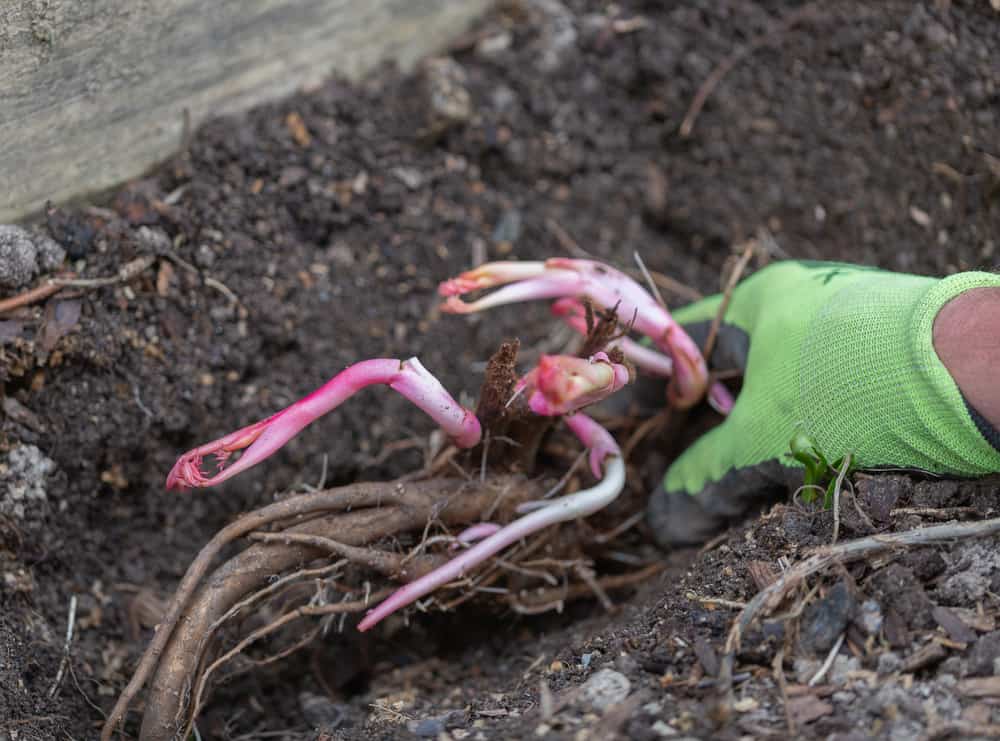
Take care when planting your peonies – if they’re too deep they won’t bloom as well, or at all. You don’t want to miss out on their vibrant hues and intriguing petals. Finish off by watering deeply.
Container Peony Care
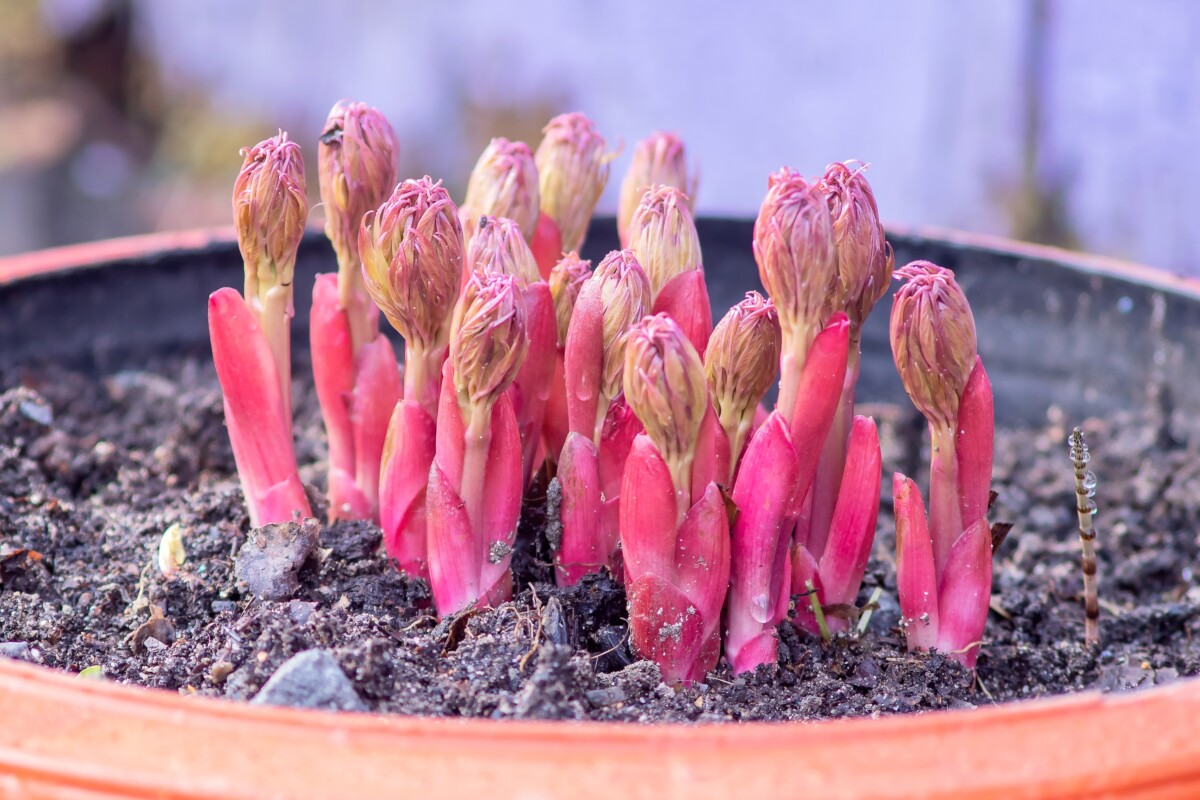
Peonies are garden favorites because they’re beautiful and relatively easy to care for. They can survive for many years with the right care.
Peonies thrive in cooler areas, growing best in USDA zones 3 to 9 depending on the variety you choose.
You’ll need to water them thoroughly weekly. As mentioned, peonies love water but they hate swimming in it, so be careful not to overwater them.
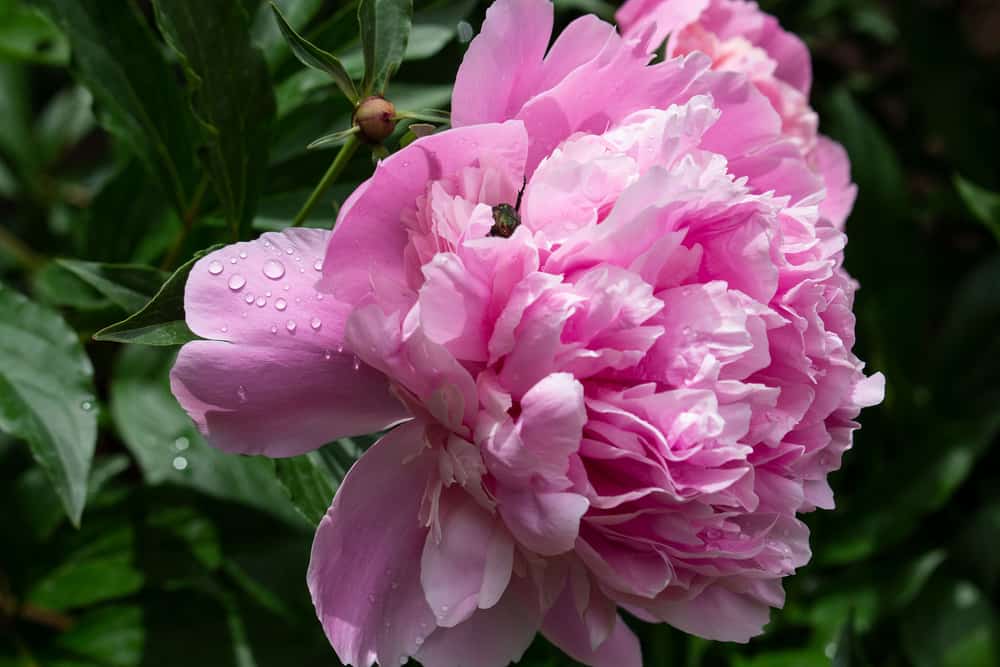
Peonies can withstand short dry spells once they’re established, but their soil shouldn’t stay dry for long. Bear in mind that container plants dry out faster, so you’ll need to water more often.
On warmer days you may need to water more than once. The best way to water is thoroughly and slowly, making sure the water soaks every inch of soil.
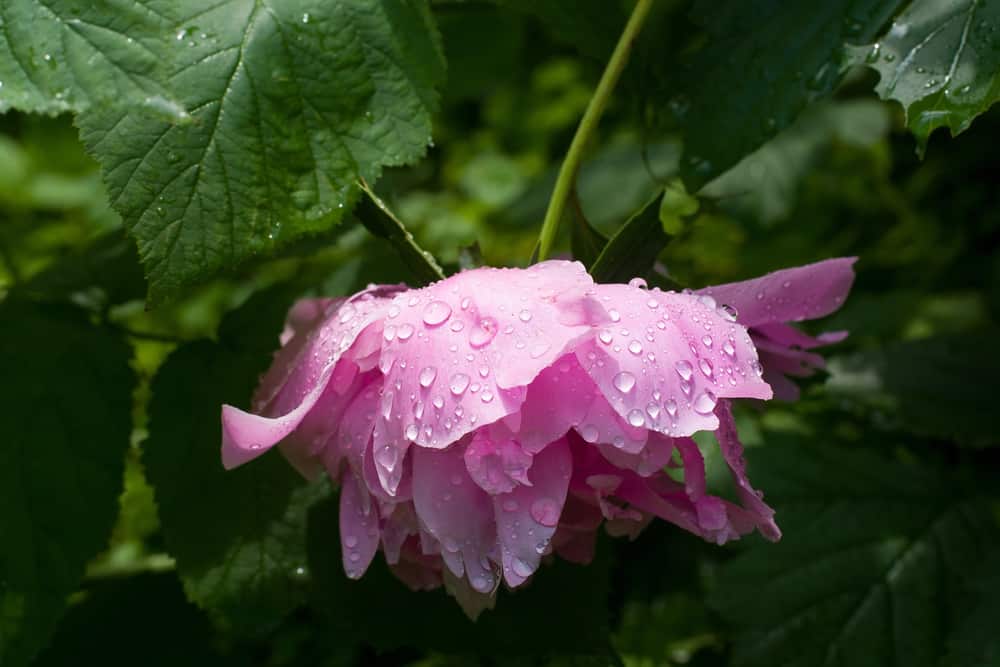
To keep your peonies healthy and happy, you’ll need to fertilize them annually. The best time to do this is just after the blooming season, or just before with a flower-focused fertilizer if you are lacking blooms. Here’s our guide to fertilizing peony plants in early spring.
Only prune peonies when absolutely necessary. Pruning is best done during winter to prepare them for their winter rest or when there are diseased leaves or stems.
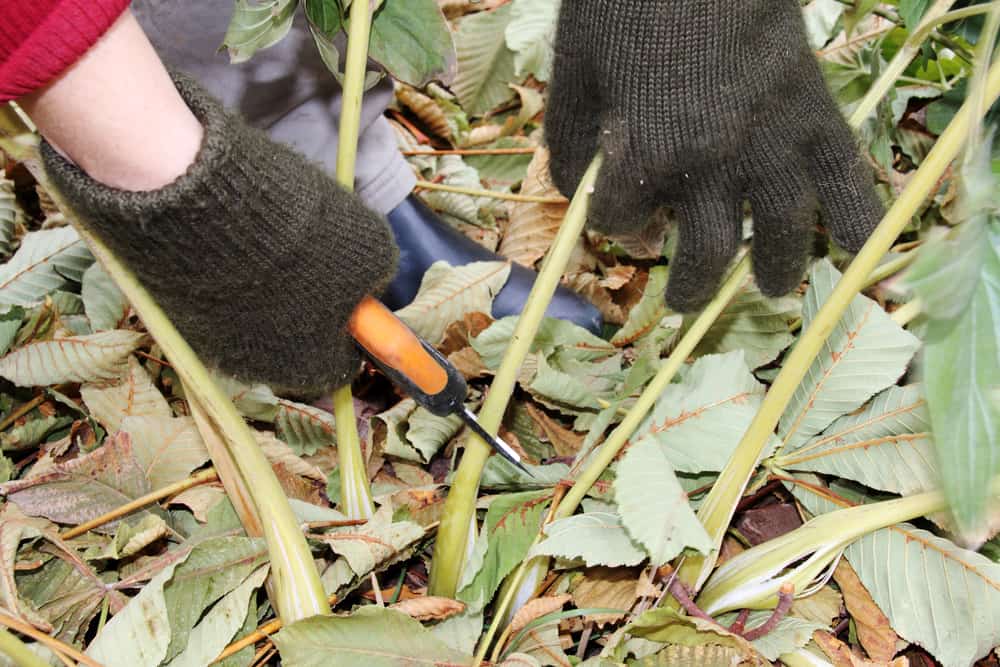
When pruning, snip just above a healthy bud. If you’re cutting away a diseased stem, it’s best to cut back to healthy wood and dispose of all affected offcuts. If you notice stems overlapping each other and rubbing against one another, it may be time to cut one of those away.
As much as peonies enjoy cooler climates, they need to be protected during the coldest months. Ideally, you’ll need to bring them indoors to overwinter.
Pests and Diseases
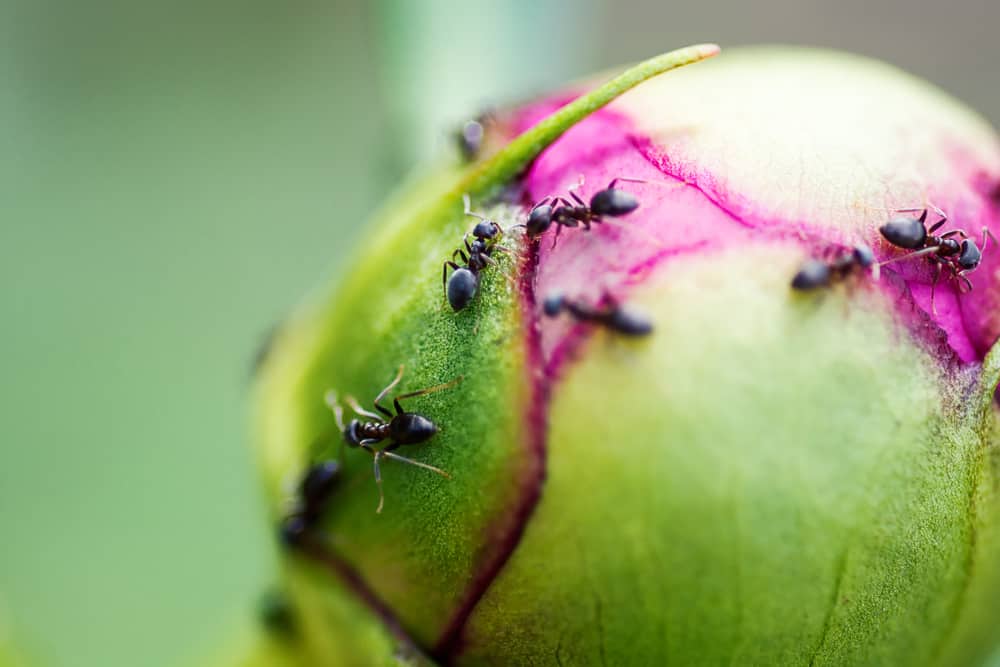
Pests and insects aren’t generally an issue when it comes to these easy-care plants. Other than tuber rot, there are just a handful of fungal diseases to keep an eye out for.
Powdery mildew is a common issue affecting peonies and several other plants. The white coating mainly stunts growth. Affected leaves and stems should be cut away as soon as you spot the disease.
Peony wilt is a deadly fungal disease that commonly affects these plants. True to its name, it causes the plant’s stems to wilt and eventually die off.
This fungal disease is also known as Botrytis blight. It causes black and brown spots and cankers on leaves and stems. You might notice your buds turning brown too and smaller buds may fail to open completely. Peony wilt commonly occurs during spring and summer, when there is prolonged humid and wet weather. Sometimes, a grey mold grows on affected parts, especially in wet conditions.
You may notice ants visiting your soon-to-open peony buds in spring, but this is nothing to worry about. Read more about why ants love peony buds and if there’s anything you need to do about it here.
Even without a backyard, you can still enjoy the wonders of these popular flowers.
Pop peonies in a container with plenty of room and sunlight, keep them watered, watch out for pests, and you should have a happy flowering peony for years to come.
